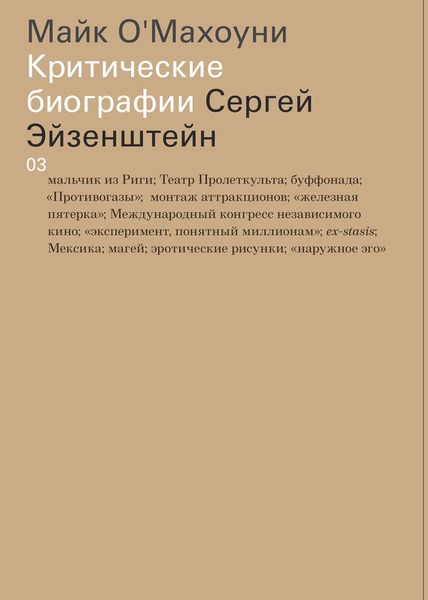


Критические биографии
Series · 5 books · 2005-2012
Books in series

#1
Guy Debord
2005
Though well-known for his founding of the avant-garde Situationist International movement and his prominent political and cultural activism, Guy Debord was nonetheless a surprisingly elusive and enigmatic figure, spending his last years in an isolated farmhouse in Champot, France. Andy Merrifield's Guy Debord pushes back the farmhouse shutters and opens a window onto Debord's life, theory, and art.
Merrifield explores the dynamics of Debord's ideas and works, including the groundbreaking Howls for Sade and his 1967 classic, The Society of the Spectacle . Debord understood life as art, Merrifield argues, and through that lens he chronicles Debord's stint as a revolutionary leader in the 1950s and 1960s, his time in Spain and Italy during the 1970s and the reclusive years leading up to his death in 1994.
Dada and Surrealism's legacy and punk rock's god, Guy Debord spun theories on democracy, people, and political power that still resonate today, making Merrifield's concise yet comprehensive study an invaluable resource on one of the foremost intellectual revolutionaries of the twentieth century.

#2
John Cage
2012
American writer, composer, artist, and philosopher John Cage (1912–92) is best known for his experimental composition 4’33,” a musical score in which the performer does not play an instrument during the duration of the piece. The purpose, Cage said, was for the audience to listen to the sounds of the environment around them while the piece was performed. Groundbreaking pieces such as 4’33”, as well as Sonatas and Interludes not only established Cage as a leading figure in the postwar avant-garde movement, but also cemented the enduring controversy surrounding his work.
In this new biography, Rob Haskins explores Cage’s radical approach to art and aesthetics and his belief that everyday life and art are one and the same. Scrutinizing Cage’s emphasis on chance over intention, which rejected traditional artistic methods and caused an uproar among his peers, Haskins elucidates the ideas that lay behind these pillars of Cage’s work. Haskins also demystifies the influence of Eastern cultures, particularly Zen Buddhism, on Cage, including his use of the Chinese text I Ching as his standard composition tool in all his work after 1951. Adding to our understanding of the art, music, and ideas of the twentieth century, this book provides an engaging look at a man who continues to challenge and inspire artists worldwide.

#3
Sergei Eisenstein
2008
A major influence on such filmmakers as Hitchcock, Godard, Fellini, and Scorsese, Sergei Eisenstein left an enduring legacy that was deeply informed by the political realities of early-twentieth-century Soviet Communism. In Sergei Eisenstein, Mike O’Mahony uses this historical lens to examine the richly diverse films, writings, and artwork of one of the foremost filmmakers of the twentieth century.
Drawing on an extensive archive of Eisenstein’s published and unpublished writings, O’Mahony situates his oeuvre in the social and political context of the first three decades of Communist rule in the Soviet Union. The book analyzes his most influential films—including Battleship Potemkin, October, and Aleksandr Nevskii—as well as his uncompleted film projects, pioneering theories and methods, and copious archive of writings and drawings. O’Mahony examines how Eisenstein’s projects were generated or constrained by his volatile and complex personality, ongoing political events, and the conflict between his beliefs the Stalinist regime and his beliefs as a Bolshevik artist. The arcs of success and defeat in Eisenstein’s career, the book ultimately reveals, are inextricably intertwined with these fraught political and personal circumstances.
An in-depth and thoughtful biographical treatment, Sergei Eisenstein gives us a new, richer understanding of this standard-bearer in modern filmmaking, making this an accessible and essential read for historians, scholars of film history, and movie buffs alike.

#4
Marcel Duchamp
2006
A revealing account of an artist whose enduring obsession with chance and coincidence shaped both his life and work, Marcel Duchamp illuminates one of the most important and influential figures in all of modern art.
Drawing on the artist’s own correspondence as well as interviews, Paris-based curator and art critic Caroline Cros explores the creative processes behind Duchamp’s works—including his famous anti-sculptures, the "Readymades"; the enigmatic Grand Verre; and the seductive, disturbing Etant Donnés—as well as the often hostile reception he encountered in Paris and around the world.
Cros also examines Duchamp’s work after he abandoned his art at the age of thirty-six. Notoriously, Duchamp claimed that he would dedicate the remainder of his life to chess, but here we learn of his ongoing contributions to the art world, including his intense involvement in museums, foundations, and surrealist publications.
With two major Dada exhibitions planned for 2006, at the National Gallery of Art in Washington, D.C., and the Museum of Modern Art in New York, Marcel Duchamp will be this year’s ultimate guide to the master of the movment.

#5
Ludwig Wittgenstein
2007
Ludwig Wittgenstein is generally considered as the greatest philosopher since Immanuel Kant, and his personal life, work, and his historical moment intertwined in a fascinating, complex web. Noted scholar Edward Kanterian explores these intersections in Ludwig Wittgenstein, the newest title in the acclaimed Critical Lives series. Wittgenstein’s works—from Tractatus Logico-Philosophicus to the posthumously published Philosophical Investigations —are notoriously dense, and Kanterian carefully distills them here, proposing thought-provoking new interpretations. Yet the philosopher’s passions were not solely confined to theoretical musings, and the book explores Wittgenstein’s immersion in art and music and his social position as a member of the sophisticated Viennese upper class at the turn of the century. His personal and professional relationships also offer insights into his thoughts, as he was friends with the greatest thinkers of the twentieth century, including John Maynard Keynes, George Edward Moore, Bertrand Russell, and Gilbert Royle. The philosopher was also deeply tormented by ethical and religious questions, and his internal turmoil, Kanterian argues, gives us a deeper understanding of the important conflicts and tensions of his age. Ultimately, the author contends, Wittgenstein’s life reveals insights into the ethical quandaries of our own time. A readable and concise account, Ludwig Wittgenstein is an informative, accessible introduction to the one of the greatest thinkers of our age.